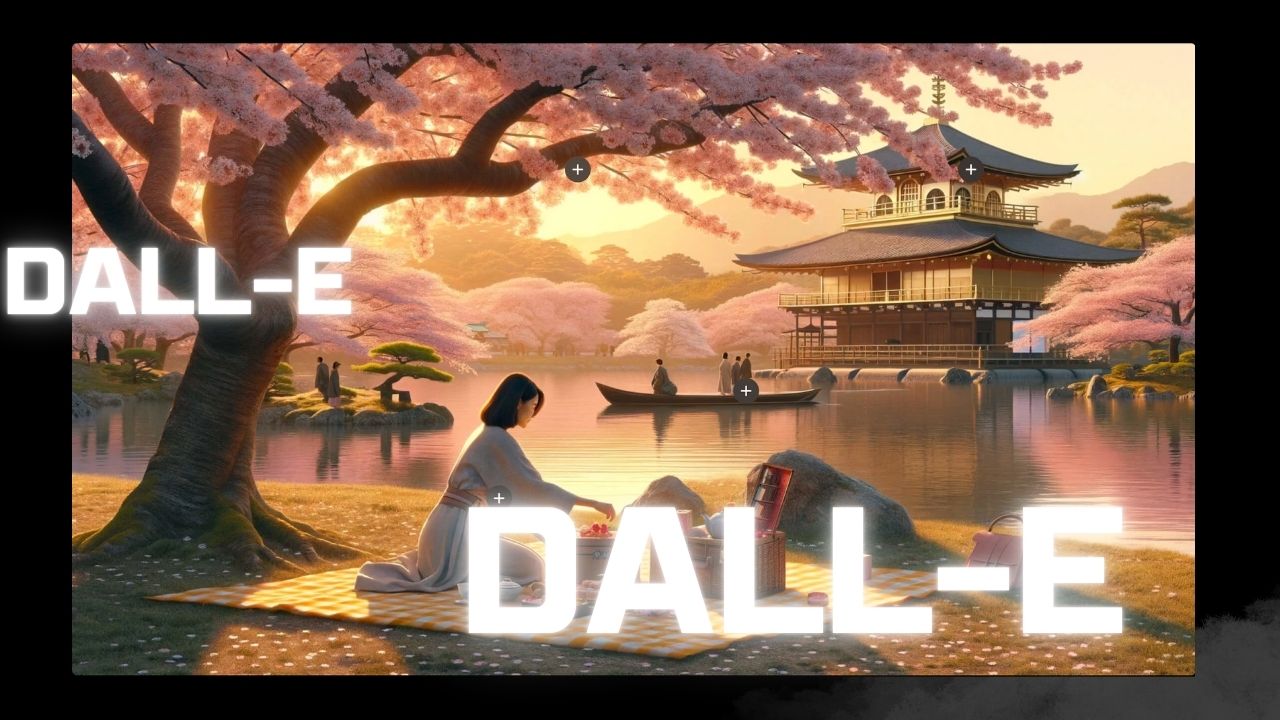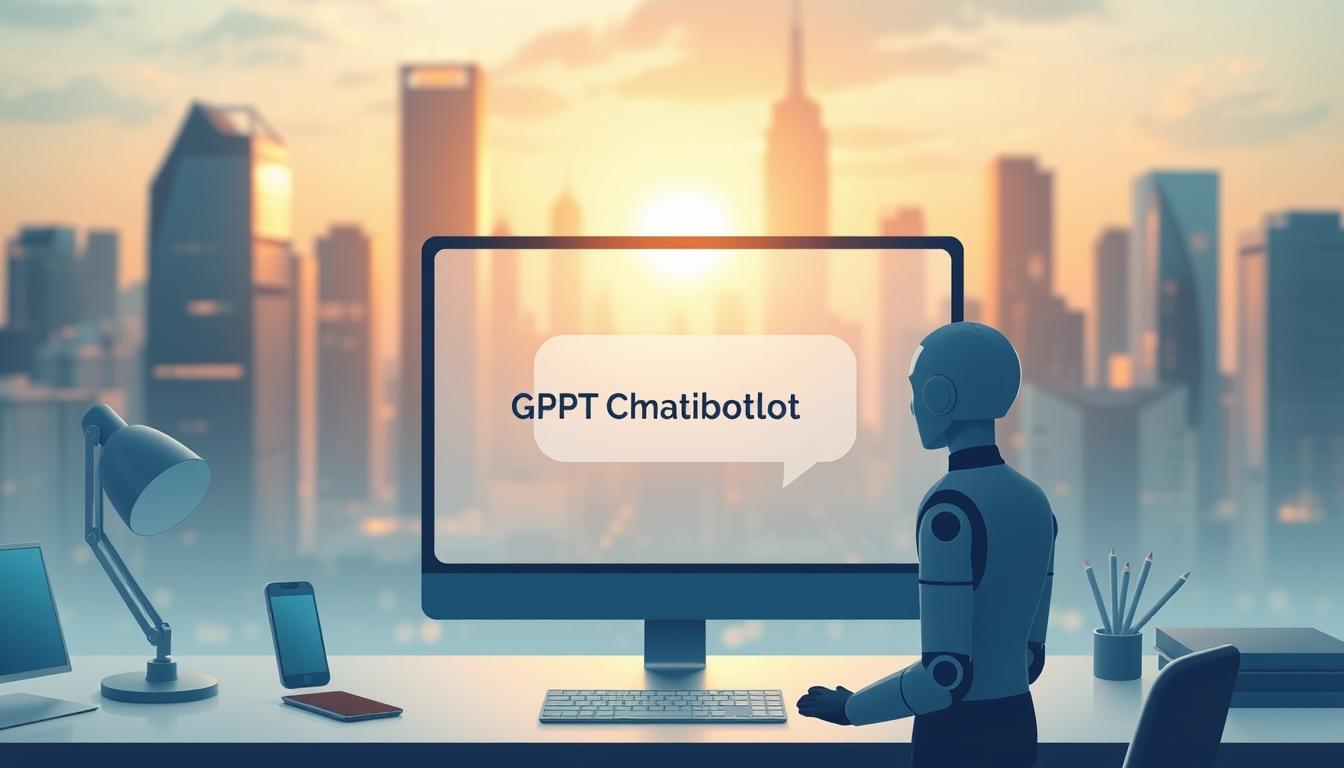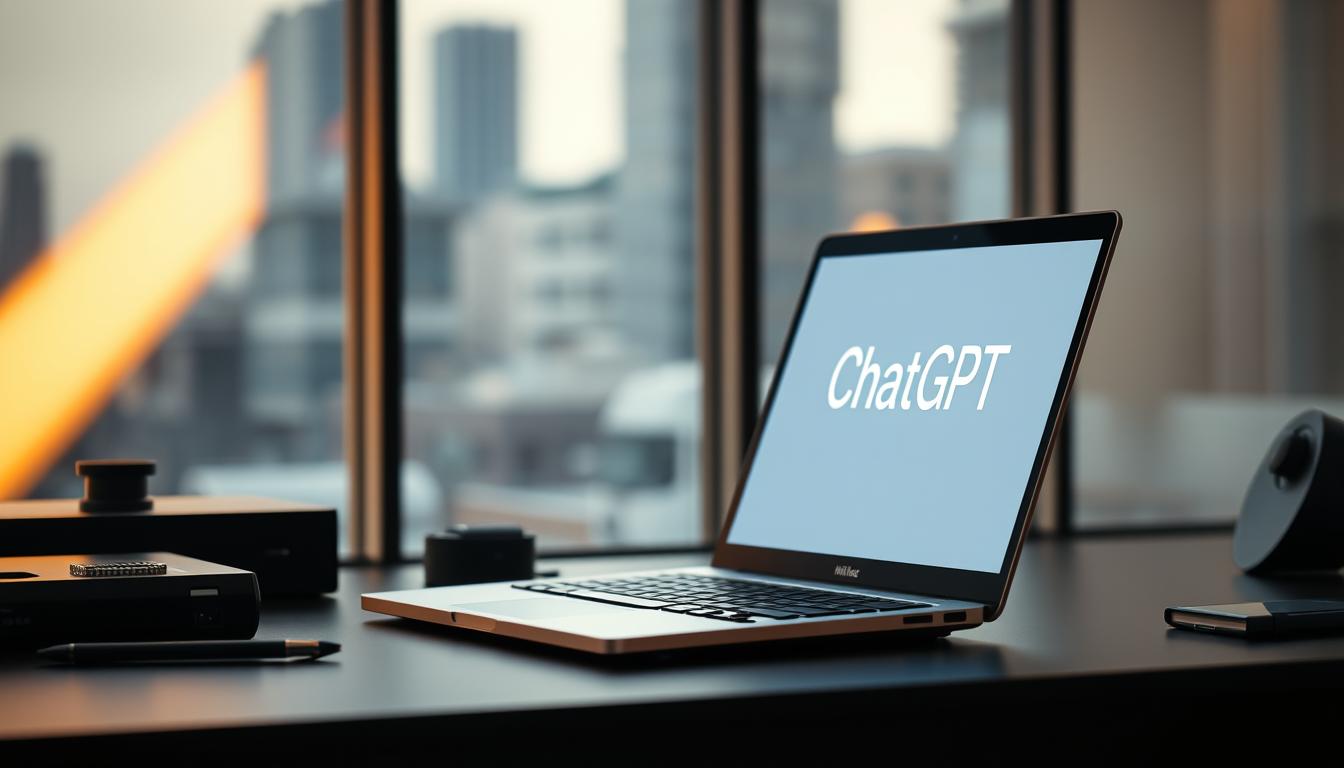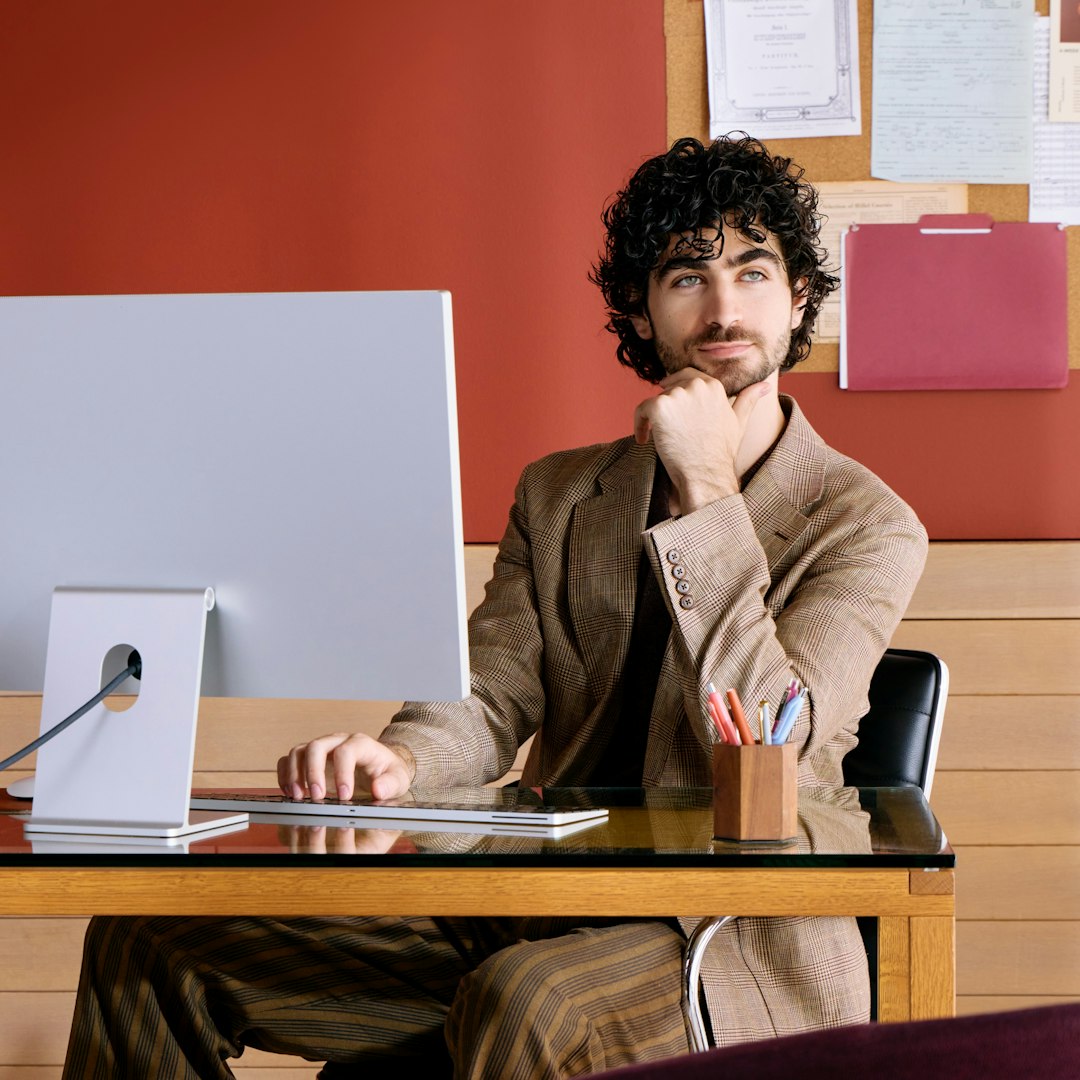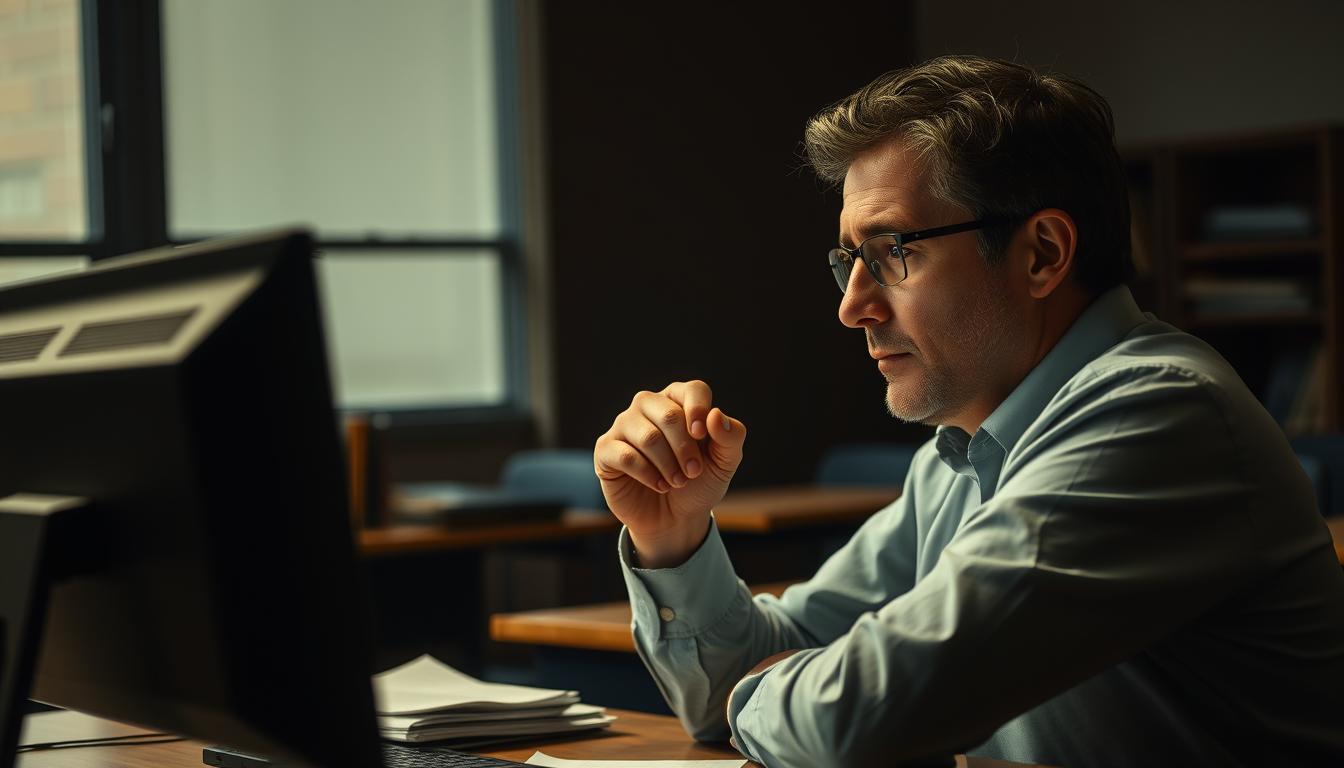DALL-E is a standout tool for creatives. OpenAI developed it, and it turns words into images effortlessly. Need a realistic portrait or an abstract scene? DALL-E uses ai image generation to bring it to life.
It’s powered by a diffusion model, learning from billions of images and texts. This means it can create unique images in seconds.
Over 1.5 million users love DALL-E, with two million images made daily. You don’t need to be an artist to use OpenAI DALL-E. It offers styles from photorealism to surrealism.
Tools like inpainting and outpainting let you edit and expand images. Its NLP and NLU tech ensure your prompts are understood perfectly.
DALL-E isn’t just for experts. It’s for marketers, educators, and anyone who wants to create. Its easy design lets beginners make professional visuals. This makes dall-e a game-changer in digital art.
What Is DALL-E and Why It’s Revolutionary
DALL-E is a groundbreaking tool in the world of artificial intelligence. It uses advanced neural networks to turn text into images. This generative ai system has revolutionized how we create visuals, from realistic photos to surreal art.

Its power lies in its ability to understand complex text prompts and translate them into detailed images.
The Origin Story of DALL-E
Launched in 2021, DALL-E emerged as a milestone in artificial intelligence research. Its neural network was trained on vast datasets to understand relationships between words and visuals. Early versions could already generate basic images, but each iteration improved its ability to parse nuanced descriptions and produce high-quality outputs.
The system’s foundation relies on advanced machine learning techniques that analyze patterns in text and image data.
How DALL-E Got Its Unique Name
The name merges Salvador Dalí, the surrealist painter known for dreamlike imagery, and WALL-E, the Pixar robot symbolizing technological creativity. This fusion reflects its dual focus on artistic innovation and engineering precision. The blend of art and tech in the name mirrors its role as a tool for both creators and developers.
The Evolution from DALL-E to DALL-E 3
Here’s how each version advanced the technology:
| Version | Key Advancements |
|---|---|
| DALL-E (2021) | Launched with basic text-to image capabilities. Could create simple compositions but struggled with complex prompts. |
| DALL-E 2 (2022) | Introduced higher resolution outputs (up to 4k) and improved style versatility. Enabled image editing via text instructions like “remove background.” |
| DALL-E 3 (2023) | 4x resolution of DALL-E 2, enhanced contextual understanding, and ethical safeguards. Integrates with ChatGPT and Microsoft’s Bing for seamless workflow. |
Each update expanded its creative range and usability. DALL-E 3’s neural network now handles intricately complex prompts while prioritizing safety and inclusivity in generated visuals.
The Science Behind DALL-E’s Image Generation
Every image DALL-E creates is a result of neural networks and machine learning. It uses a diffusion model, a deep learning image synthesis technique. This turns text prompts into visuals. Here’s how it works:
1. Random Noise to Art: The AI starts with random pixel patterns. Over many iterations, it refines these pixels. It does this by using its training data until the image matches your text input. This gradual refinement process is key to its realism.
2. Transformer + CNN Hybrid: DALL-E combines transformer models (for understanding language) with convolutional neural networks (CNNs) that analyze visual details. This mix lets it grasp both your words and the right visual style.
3. Learning from Data: Through machine learning, DALL-E studied millions of image-text pairs. It learned patterns like “sunset” = warm colors and soft edges. Now, when you ask for a “sunset over mountains,” it applies these patterns.
While DALL-E 2’s diffusion model boosts resolution and accuracy, it faces challenges like misplacing objects or cultural biases. OpenAI addresses this with safety filters and gradual rollout. This improves safety and quality. The result? A tool that blends cutting-edge neural network architectures into a creative powerhouse anyone can use.
How DALL-E Transforms Text Prompts Into Visual Art
Every image from DALL-E is a result of a precise mix of language and code. As an ai artwork generator, DALL-E converts words into pictures through image synthesis. This is done with the help of advanced algorithms. Let’s explore how this digital image creation process works:
The Art of Writing Effective Prompts
Begin with clarity. A vague prompt like “a beach” won’t work well. But a detailed prompt like “a sunset beach with turquoise waves and palm trees” will give better results. Include specific details like colors, objects, and settings. Stay away from vague terms:
- Weak: “a mountain” → Strong: “a snowy mountain at sunrise with pine trees”
- Weak: “abstract art” → Strong: “geometric shapes in neon colors on a black background”
How DALL-E Interprets Your Words
Here’s the science behind the magic:
1. Text Encoding: DALL-E’s transformer architecture turns words into numbers.
2. Diffusion Process: A U-Net model makes a noisy image clearer step by step.
3. Output Generation: After many adjustments, the final image is created based on the model’s training data.
This system helps DALL-E understand differences like “impressionist painting” and “3D render.”
Tips for Better Results
| Tip | Example |
|---|---|
| Use adjectives | “vintage camera on wooden table, shallow depth of field” |
| Specify style | “cyberpunk cityscape in neon-lit anime style” |
| Iterate prompts | Adjust terms like “modern” → “mid-century modern furniture” |
Remember: DALL-E 3’s RLHF (Reinforcement Learning from Human Feedback) makes it more accurate. Try using precise language to get the best results!
My Experience Using DALL-E for Creative Projects
Using dall-e was like stepping into a visual playground. I began by testing prompts for a project that mixed artificial intelligence in art with storytelling. For a client’s campaign, I asked for “a retro space scene in the style of H.R. Giger.” DALL-E turned it into eerie, biomechanical landscapes.
But simplicity often works best. When I simplified prompts like “steampunk café,” the results were sharp and clear.
My early attempts had some bumps. A request for “Lionel Messi mid-sprint” made his face a pixelated blur. Text overlays? DALL-E added gibberish instead of logos. Yet, using style references like “early Pixar animation” or “vintage National Geographic photo” often fixed these issues.
Here’s what I learned:
- Less is more: Compound terms like “cyberpunk bookstore” beat overly detailed descriptions.
- Style references anchor outputs: “Imagine a futuristic library in the style of Tadao Ando” gave clean, minimalist results.
- Iterate, don’t despair: Revising “a cozy café interior” to “cozy café with warm lighting and wooden tables” made all the difference.
AI image generation speeds up brainstorming, but DALL-E isn’t a replacement—it’s a collaborator. It forces me to clarify my vision, turning vague ideas into tangible drafts. The tool’s quirks remind me that creativity needs human guidance, even with artificial intelligence in art.
DALL-E’s Impact on Professional Design and Illustration
Generative AI tools like DALL-E are changing how professionals design. They make some tasks easier but raise big questions about originality and creativity. This is a big deal for creatives.
How Designers Are Leveraging AI-Generated Imagery
Designers are using DALL-E to get ideas started or to see what’s possible. For example, Adobe and Creative Market use AI to make logos and UI designs faster. Here’s what they’re doing:
- Creating first drafts for pitches
- Trying out different colors and layouts
- Making quick assets for brainstorming
Commercial Illustration’s New Reality
The world of commercial illustration is changing fast. People are moving away from buying stock photos. They want custom AI images instead. Here’s how things have changed:
| Aspect | Traditional Method | Generative AI Approach |
|---|---|---|
| Concept Development | Manual sketching | AI-generated concept grids |
| Customization | Time-consuming revisions | Instant parameter adjustments |
| Cost | Hiring illustrators | Pay-per-use models |
Cost and Time Savings in Creative Workflows
Freelancers can save a lot of time and money with AI. For example, making product mockups is now 40% faster. Graphic designers make about $50,710 a year. But, AI tools like DALL-E 3 can make top-notch images for less.
- Logo drafts: 8 hours → 15 minutes
- Social media grids: 2 days → 2 hours
- Product renderings: 3D modeling → text-based prompts
AI makes things more efficient, but it raises big questions. Who owns AI-made work? How do we keep human creativity alive in a world of automation? These are the big questions for the future of design.
Comparing DALL-E to Other AI Image Generators
Choosing the right ai artwork generator depends on your creative goals. DALL-E competes with tools like Midjourney, Stable Diffusion, and Google’s ImageFX. Let’s break down their differences:

- Midjourney: Offers high-quality outputs via Discord, starting at $10/month. Its community-driven approach lets users share prompts, but outputs are public unless paid tiers are used.
- Stable Diffusion: Open-source flexibility allows customization. It supports negative prompts and style uploads, ideal for fine-tuning neural network art.
- Adobe Firefly: Integrates with Creative Cloud, providing commercial safety and multilingual support. Free tier limits outputs to four images per prompt.
- Google’s ImageFX: Free to use with four outputs per prompt. Its image-to-image translation tools work well for editing existing designs.
DALL-E’s edge comes from its seamless ChatGPT integration and HD quality, though it costs more than free options. For quick prototyping, free tools like ImageFX shine. If customization matters, Stable Diffusion’s open-source nature wins. I found DALL-E’s advanced text-to-image accuracy best for professional use, while others excel in niche areas like community collaboration or style adaptation.
Ethical Considerations in Neural Network Art Creation
Recent court rulings and real-world controversies show the ethical challenges of neural network art. In 2023, a U.S. court said only humans can own copyrights. This decision has shaken the artificial intelligence in art world.
The 2022 Colorado fair award to AI-generated art caused outrage. It showed how openai dall-e tools challenge traditional art values.
Copyright questions are not settled. Courts and creators disagree on who owns AI-generated works. Lawsuits from artists accuse companies like Midjourney of using unlicensed art.
The UK Supreme Court’s 2023 ruling that AI can’t be inventors highlights human-centric copyright laws. Yet, tools like openai dall-e use vast datasets, making ownership unclear.
- Artificial intelligence in art systems like DALL-E 3 face scrutiny for uncredited style mimicry.
- Legal battles over training data usage show tensions between innovation and artist rights.
Artist attribution debates pit human creators against tech pioneers. Should credit go to the prompt writer, the AI developer, or original artists? Some see AI as a tool like a brush, but critics fear it erases human creativity.
The neural network art community struggles to define fair collaboration models.
Misuse risks drive safety measures. Tools like Nightshade from the University of Chicago “poison” training data to block AI learning from protected art. OpenAI limits DALL-E’s access to sensitive content and blocks harmful prompts. Yet, past issues like DeepNude’s misuse to create fake nudes show the stakes.
Balancing innovation with ethical guardrails is critical as openai dall-e reshapes creativity.
How to Access and Use DALL-E Today
Starting with DALL-E is easy. Whether you’re a designer, student, or hobbyist, here’s how to explore its image-to-image translation and creative possibilities with machine learning tools.
Pricing Models and Subscription Options
Access depends on your needs:
- Free access: Create basic images via bing.com/create or Microsoft Designer’s image creator (no account required).
- ChatGPT Plus ($20/month): Get 200 monthly image credits and priority access.
- Azure OpenAI Service: Custom plans for developers, with APIs and scalable credits.
Integration with Creative Tools
Integrate DALL-E with other platforms easily using these methods:
| Platform | Features | Access Method |
|---|---|---|
| Microsoft Designer | Image generation, collage creation | Web-based integration |
| Azure OpenAI | APIs for developers, image-to-image translation | Enterprise dashboard |
| ChatGPT Plus | Direct image prompts, 200 monthly credits | Subscription portal |
Try prompts like “oil painting style” or “studio photography” to guide DALL-E’s machine learning algorithms. Use clear descriptions, like “3 red apples on a wooden table” instead of vague terms. Experiment with styles like retro pixel art or vector graphics to explore new creative paths!
The Future of Deep Learning Image Synthesis
Looking ahead, deep learning image synthesis tools like DALL-E will tackle today’s challenges with smarter algorithms. Current hurdles, like rendering complex scenes or abstract ideas, may disappear as machine learning models understand context better. Researchers are working on diffusion models that turn random noise into detailed visuals, combining text and image processing with artificial intelligence systems.

- Improved multimodal systems merging text, audio, and visuals into cohesive projects
- Smaller, faster models for real-time creative workflows
- Enhanced ethical safeguards against biased outputs or privacy risks
Imagine a world where artists refine rough sketches into polished designs with AI assistants. Or educators creating interactive lessons that blend text and images seamlessly. These possibilities depend on breakthroughs in machine learning and diverse datasets. Companies like OpenAI are exploring ways to let users tweak outputs iteratively—a feature that could revolutionize design sprints.
As computational power grows, expect lighter-weight versions of tools like DALL-E to run on personal devices. This shift could make deep learning image synthesis as routine as using a word processor. Yet, balancing creativity with ethical guardrails remains key. The coming years will test how artificial intelligence collaborates with human creators—not just replacing tasks, but expanding what’s possible.
How DALL-E Is Democratizing Digital Image Creation
DALL-E’s tools let anyone create stunning visuals. This change is not just about tech—it’s about culture. It lets everyone join in generative ai creativity, something only experts used to do.
Making Professional-Quality Images Accessible to Non-Artists
Small businesses can make logos or ads without designers. Writers can design book covers. Bloggers can add lifelike scenes to their posts. Here’s how it works:
- Type a prompt like “medieval castle at sunset”
- Choose from DALL-E’s generated options
- Adjust details until satisfied
Old tools needed software skills. DALL-E makes creativity easy. Users focus on their vision, not tech problems. Sites like Canva and Figma already use this ai image generation, making top results easy to get.
Educational Applications and Learning Opportunities
Schools use DALL-E to teach visual storytelling. Students can explore history by making scenes or show science concepts in diagrams. Teachers say:
- Students are more engaged in art classes
- They understand design better
- They can see art from around the world without leaving
OpenAI offers free workshops for teachers. They show how generative ai tools can spark creativity. Students in remote areas can now access tools once only available in big art centers.
Limitations of Current AI Artwork Generators
ai artwork generators like DALL-E are pushing creative limits. Yet, their neural network flaws are evident. Hands, faces, and text often appear distorted. Creating complex scenes or abstract ideas requires simple prompts.
My own tests showed melting faces and extra limbs. This proves that image synthesis is not yet as precise as human art.
- Hands and facial features frequently appear warped
- Text within images becomes blurry or unreadable
- 3D perspectives bend unnaturally
- Biases surface—prompts like “CEO” default to male figures
Legal issues also affect their use. Lawsuits against OpenAI and Midjourney have raised copyright disputes. The environmental impact is significant too. Large neural network models use a lot of energy, with each AI chat using as much water as 500ml bottles.
These tools don’t truly create—they just mix existing data. Upon closer look, you’ll see flat colors and surreal details. Without human intent, AI art feels empty, like a mosaic of patterns without real meaning.
Conclusion: Embracing the DALL-E Revolution in Visual Content
DALL-E’s journey shows how artificial intelligence in art is changing creativity. I’ve used OpenAI DALL-E myself, and it’s more than a tool. It connects imagination with reality, turning text into images quickly.
This technology lets more people create professional images easily. Teachers can make lesson plans visual, small businesses can make ads fast, and artists can try new styles. It’s not just faster—it’s more inclusive.
But with DALL-E’s power comes the need for careful use. We must consider ethics and copyright. Future updates could make visuals even better, opening up new creative possibilities.
DALL-E can help with everything from logos to sci-fi scenes. It’s time to explore and create, but remember to keep it human. The revolution is just starting.
FAQ
What is DALL-E and what makes it revolutionary?
DALL-E is an AI tool by OpenAI that turns text into amazing images. It’s groundbreaking because it can make images from text, opening new doors for artists and creators.
How did DALL-E get its name?
DALL-E combines Salvador Dalí, the surrealist artist, with WALL-E, the animated robot. This name shows its mix of creativity and tech innovation.
How has DALL-E evolved over time?
DALL-E has grown a lot, from its first version to DALL-E 2 and 3. Each update has made images better, understood more, and more creative, showing AI’s fast progress.
What technology powers DALL-E?
DALL-E uses advanced neural networks and deep learning. It’s a diffusion model that learns from images and text, making images that match what you describe.
How can I write effective prompts for DALL-E?
Good prompts are clear and detailed. They should include style, color, and context. Trying different ways to ask can also help.
What should I know about DALL-E’s interpretation process?
DALL-E looks at your text, handling unclear parts and context. It can make many different images from one prompt, showing its creative range.
What tips can help me achieve desired outputs with DALL-E?
To get what you want, refine your prompts based on what you get first. Mention specific styles or artists. Also, fix common problems by changing your prompts a bit.
How is DALL-E impacting professional creative industries?
DALL-E is changing how designers and illustrators work. It’s a quick way to get ideas and explore new concepts, making their work easier and faster.
What are the main ethical considerations surrounding DALL-E?
DALL-E raises questions about copyright, who gets credit, and misuse. OpenAI is working on safety to prevent harm.
How can I access and start using DALL-E?
You can use DALL-E by signing up on OpenAI’s site. There are web and API options, with prices for different needs.
What does the future hold for AI image synthesis technologies like DALL-E?
Future updates might fix current issues, understand scenes better, and mix AI with more media types. This could change how we create images and work in creative fields.
How is DALL-E making image creation accessible to everyone?
DALL-E lets anyone make high-quality images, even without art skills. This opens up new creative possibilities for many people.
What limitations currently exist with DALL-E?
DALL-E struggles with accurate human bodies, different views, and abstract ideas. Knowing these limits helps users find ways to work around them.

